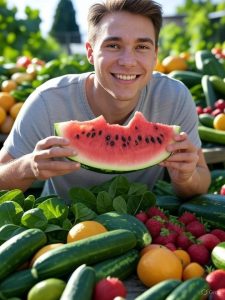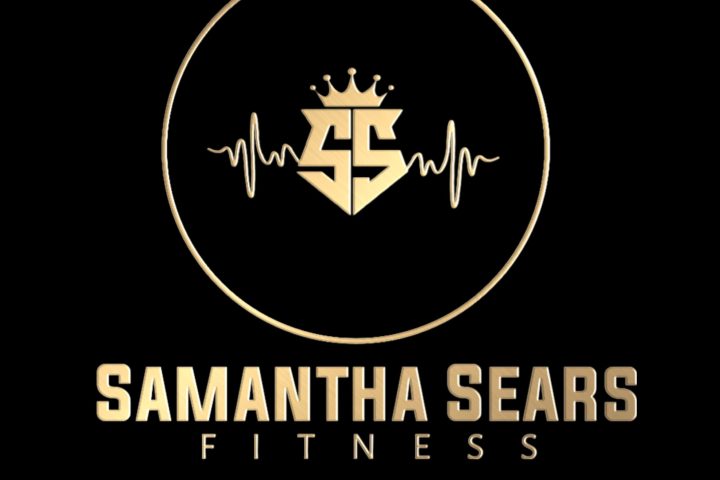
As the summer sun shines brightly, the heat is in full swing, and so is the need to stay hydrated and energized. For many, summer means barbecues, ice cream, and lazy picnics, but it’s also the perfect season to dive into foods that keep you hydrated, packed with vitamins, and brimming with nutrients. This article explores the best summer foods for hydration and nutrition, creative ways to enjoy them, and fun recipes to make your summer meals both delicious and healthful. Let’s dig in!
Why Hydration and Nutrition Matter in Summer
Summer’s high temperatures and longer days demand extra attention to hydration and nutrition. The heat increases sweat loss, making dehydration a real risk, especially during outdoor activities. According to the Centers for Disease Control and Prevention (CDC), adults need about 8–10 cups of water daily, more when active in hot weather, and children require proportional amounts. Dehydration can lead to fatigue, heatstroke, and impaired cognitive function—issues I’ve seen clients face when they neglect water intake. Beyond hydration, summer nutrition fuels energy, supports immunity, and aids recovery from physical activity, crucial for maintaining the fitness routines I’ve outlined in previous workout guides.
Foods rich in water, vitamins, and minerals are summer superstars. They help regulate body temperature, replenish electrolytes, and provide antioxidants to combat sun-induced oxidative stress. My experience as a Team Lead in education, where I’ve advocated for healthy eating among students and parents, underscores the importance of nutrient-dense foods to prevent the summer slide in health. Let’s explore the top fruits and vegetables that deliver on hydration and nutrition, ensuring you and your family thrive this season.
Top Summer Foods for Hydration and Nutrition
These fruits and vegetables are chosen for their high water content, vitamin profiles, and nutrient density, making them perfect for summer. I’ve selected options that are widely available, versatile, and loved by all ages, reflecting my experience customizing diets for diverse clients.
1. Watermelon
- Hydration and Nutrients: Watermelon is 92% water, making it one of the most hydrating fruits. It’s rich in vitamins A, C, and B6, plus lycopene—an antioxidant linked to heart health and UV protection (Journal of Agricultural and Food Chemistry). It also provides potassium for electrolyte balance.
- Why It’s Great: A 1-cup serving (154g) has just 46 calories, perfect for guilt-free snacking. As a soccer athlete, I relied on watermelon to recover after practices in Arizona’s heat, and I’ve recommended it to clients for its refreshing boost.
2. Cucumbers
- Hydration and Nutrients: At 95% water, cucumbers are hydration champions. They’re low in calories (16 per cup) and high in vitamin K, which supports blood clotting and bone health, plus silica for skin elasticity.
- Why It’s Great: Their mild flavor makes them versatile for savory dishes. My special education teaching role taught me to use cucumbers in sensory-friendly meals for kids, ensuring hydration without overwhelming tastes.
3. Strawberries
- Hydration and Nutrients: Strawberries are 91% water and packed with vitamin C (149% of the daily value per cup), folate, and manganese. They’re also high in antioxidants like anthocyanins, which reduce inflammation (American Journal of Clinical Nutrition).
- Why It’s Great: Their sweetness appeals to all ages, and they’re a staple in my fitness programs for their immune-boosting properties. A cup (152g) has 49 calories, making them a nutrient-dense treat.
4. Spinach
- Hydration and Nutrients: Spinach is 91% water and a powerhouse of vitamins A, C, K, and folate, plus iron and magnesium. It supports muscle function and oxygen transport, vital for summer activity.
- Why It’s Great: Its nutrient density supports recovery, a lesson from my soccer days. I’ve used spinach in client meal plans to combat fatigue, especially during Arizona summers.
5. Oranges
- Hydration and Nutrients: Oranges are 87% water and deliver 93% of the daily vitamin C per fruit, plus fiber and folate. They’re also rich in hesperidin, a flavonoid that may lower blood pressure (Nutrition Reviews).
- Why It’s Great: Oranges are portable and refreshing, a go-to for my fitness groups. They’re perfect for replenishing electrolytes after a workout, with 62 calories per medium fruit.
6. Zucchini
- Hydration and Nutrients: Zucchini is 94% water, low in calories (20 per cup), and high in vitamins C and B6, plus potassium and manganese. It supports digestion with its fiber content.
- Why It’s Great: Its versatility shines in both raw and cooked dishes. I’ve recommended zucchini to clients for its hydrating and filling properties, ideal for summer meals.
Different Ways to Enjoy These Fruits and Vegetables
To keep things exciting, here are creative ways to incorporate these foods into your summer diet, drawing on my experience making nutrition fun for clients and students.
Watermelon
- Fresh Slices: The simplest way—cut into wedges for a quick snack. Add a sprinkle of Tajín for a spicy twist, a tip I’ve shared with families.
- Watermelon Slushie: Blend with ice and a squeeze of lime for a hydrating drink. I’ve served this at group fitness sessions to rave reviews.
- Grilled Watermelon: Lightly grill slices for a caramelized flavor, perfect for barbecues.
- Salad Addition: Cube and toss with feta, mint, and balsamic glaze for a refreshing side.
Cucumbers
- Infused Water: Slice and add to water with lemon and mint for a spa-like drink, a hydration trick I’ve taught clients.
- Cucumber Sticks: Dip in hummus or Greek yogurt for a crunchy snack.
- Cold Soup: Blend with yogurt, garlic, and dill for a chilled cucumber soup, great for hot days.
- Pickles: Quick-pickle slices with vinegar, salt, and dill for a tangy treat.
Strawberries
- Smoothie Base: Blend with spinach, banana, and almond milk for a nutrient-packed breakfast.
- Fruit Skewers: Skewer with grapes and melon for a fun, kid-friendly snack, a hit at school events.
- Salad Topper: Slice over spinach with almonds and a balsamic dressing for a sweet-savory mix.
- Frozen Treat: Freeze whole strawberries for a refreshing bite, a client favorite during heatwaves.
Spinach
- Smoothie Booster: Add a handful to fruit smoothies—it’s tasteless but nutrient-rich.
- Wrap Filler: Use as a base for wraps with hummus, turkey, and avocado.
- Sautéed Side: Sauté with garlic and olive oil for a quick, healthy side dish.
- Pesto Alternative: Blend with basil, nuts, and olive oil for a nutrient-dense pasta sauce.
Oranges
- Juice Fresh: Squeeze for a natural drink, or freeze into popsicles for kids.
- Salad Citrus: Segment and toss into salads with spinach and walnuts for a zesty kick.
- Marinade: Use juice in marinades for grilled chicken or fish, adding flavor and hydration.
- Snack Pack: Peel and pair with nuts for a balanced, portable snack.
Zucchini
- Zoodles: Spiralize into noodles for a low-carb pasta alternative, topped with marinara.
- Grilled Slices: Grill with olive oil and herbs for a smoky side.
- Raw Ribbons: Shave into ribbons for salads with lemon dressing, a light option I’ve recommended.
- Stuffed Zucchini: Hollow out, stuff with quinoa and veggies, and bake for a hearty meal.
Fun Summer Recipes Featuring These Foods
Here are three recipes that showcase these hydrating, nutrient-rich foods, designed to be fun, family-friendly, and reflective of my approach to making nutrition enjoyable.
Recipe 1: Watermelon-Strawberry Cooler
Serves 4, Prep Time: 10 minutes
This refreshing drink is a hydration powerhouse, perfect for post-workout or a sunny afternoon.
Ingredients:
- 4 cups watermelon, cubed (seeds removed)
- 1 cup strawberries, hulled
- 1 tbsp lime juice
- 1 cup ice
- Mint leaves for garnish
Instructions:
- Blend watermelon, strawberries, lime juice, and ice until smooth.
- Pour into glasses, garnish with mint, and serve immediately.
Benefits: Combines watermelon’s lycopene and strawberries’ vitamin C for a double dose of antioxidants, plus 90% water content for hydration. My fitness groups love this for its sweet, energizing kick.
Recipe 2: Cucumber-Spinach Summer Salad
Serves 4, Prep Time: 15 minutes
A light, nutrient-packed salad that’s perfect for lunch or as a barbecue side.
Ingredients:
- 2 cups spinach, fresh
- 1 large cucumber, thinly sliced
- 1 cup cherry tomatoes, halved
- 1/4 cup feta cheese, crumbled
- 2 tbsp olive oil
- 1 tbsp lemon juice
- Salt and pepper to taste
Instructions:
- In a large bowl, combine spinach, cucumber, and tomatoes.
- Whisk olive oil, lemon juice, salt, and pepper for the dressing.
- Toss the salad with dressing, top with feta, and serve chilled.
Benefits: High in water (from cucumber and spinach), vitamin K, and folate, this salad supports hydration and muscle recovery. I’ve used it in school programs to introduce kids to healthy eating.
Recipe 3: Zucchini-Orange Grilled Boats
Serves 4, Prep Time: 25 minutes
A savory dish with a citrus twist, great for dinner or a barbecue.
Ingredients:
- 2 medium zucchinis, halved lengthwise
- 1 orange, juiced and zested
- 1 cup cooked quinoa
- 1/2 cup diced bell peppers
- 2 tbsp olive oil
- 1 tsp garlic powder
- Salt and pepper to taste
Instructions:
- Scoop out the zucchini centers to create boats, reserving the flesh.
- Mix quinoa, bell peppers, zucchini flesh, orange juice, zest, garlic powder, salt, and pepper.
- Stuff the zucchini boats with the mixture, drizzle with olive oil, and grill for 10-15 minutes until tender.
- Serve warm with a side salad.
Benefits: Zucchini’s water content hydrates, while oranges add vitamin C and quinoa provides protein. This recipe reflects my approach to balancing flavor and nutrition for clients.
Additional Tips for Summer Nutrition
- Meal Prep: Pre-cut fruits and veggies for quick access, a habit I’ve taught clients to stay consistent.
- Portion Control: Use smaller plates to manage intake, especially at barbecues, a tip from my fitness programs.
- Pair with Protein: Add nuts or grilled chicken to these dishes for satiety, a strategy I’ve used for athletes.
- Stay Colorful: Aim for a rainbow of produce to maximize nutrient variety, a principle I’ve shared with families.
Overcoming Summer Eating Challenges
- Heat Fatigue: Choose chilled options like smoothies to stay cool, a trick I’ve used in Arizona summers.
- Busy Schedules: Prep snacks ahead, leveraging my Team Lead planning skills.
- Temptation: Swap ice cream for frozen strawberries, a swap I’ve recommended to kids and adults alike.
Conclusion
Summer is the perfect time to embrace foods that hydrate and nourish. Watermelon, cucumbers, strawberries, spinach, oranges, and zucchini offer a delicious way to stay healthy, and with creative preparations and recipes, they’re accessible to everyone. My journey as a fitness professional and educator has shown me the power of nutrition in transforming lives, and these summer foods can do just that. Whether you’re sipping a watermelon cooler or grilling zucchini boats, you’re fueling your body for a vibrant season. Let’s make this summer a celebration of health and flavor!
